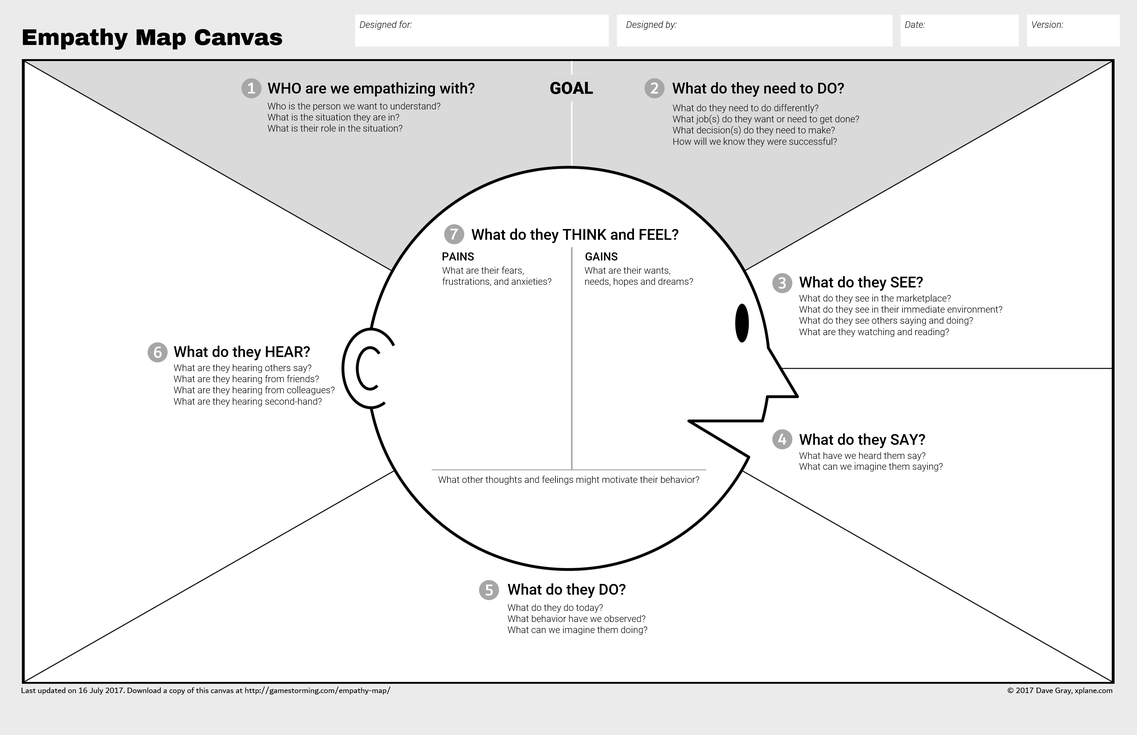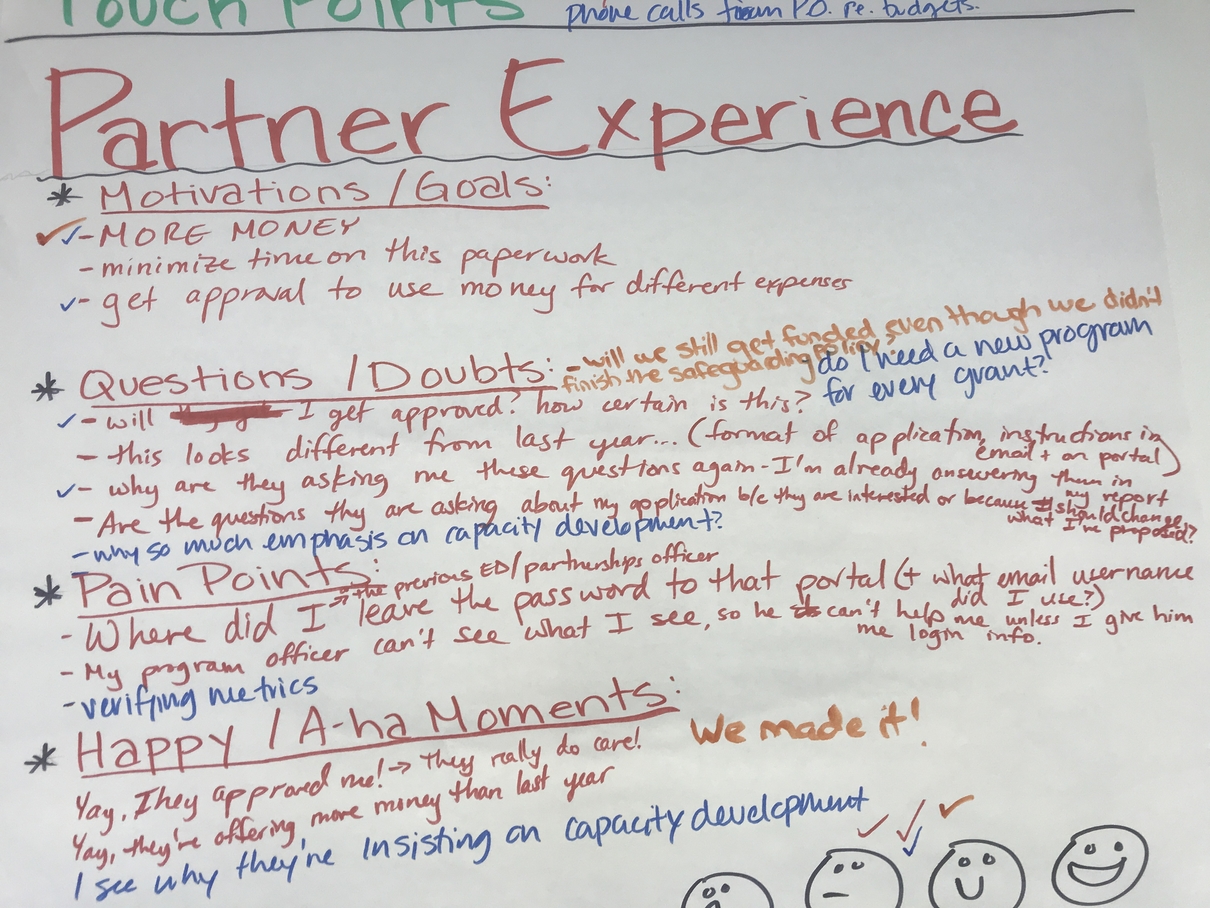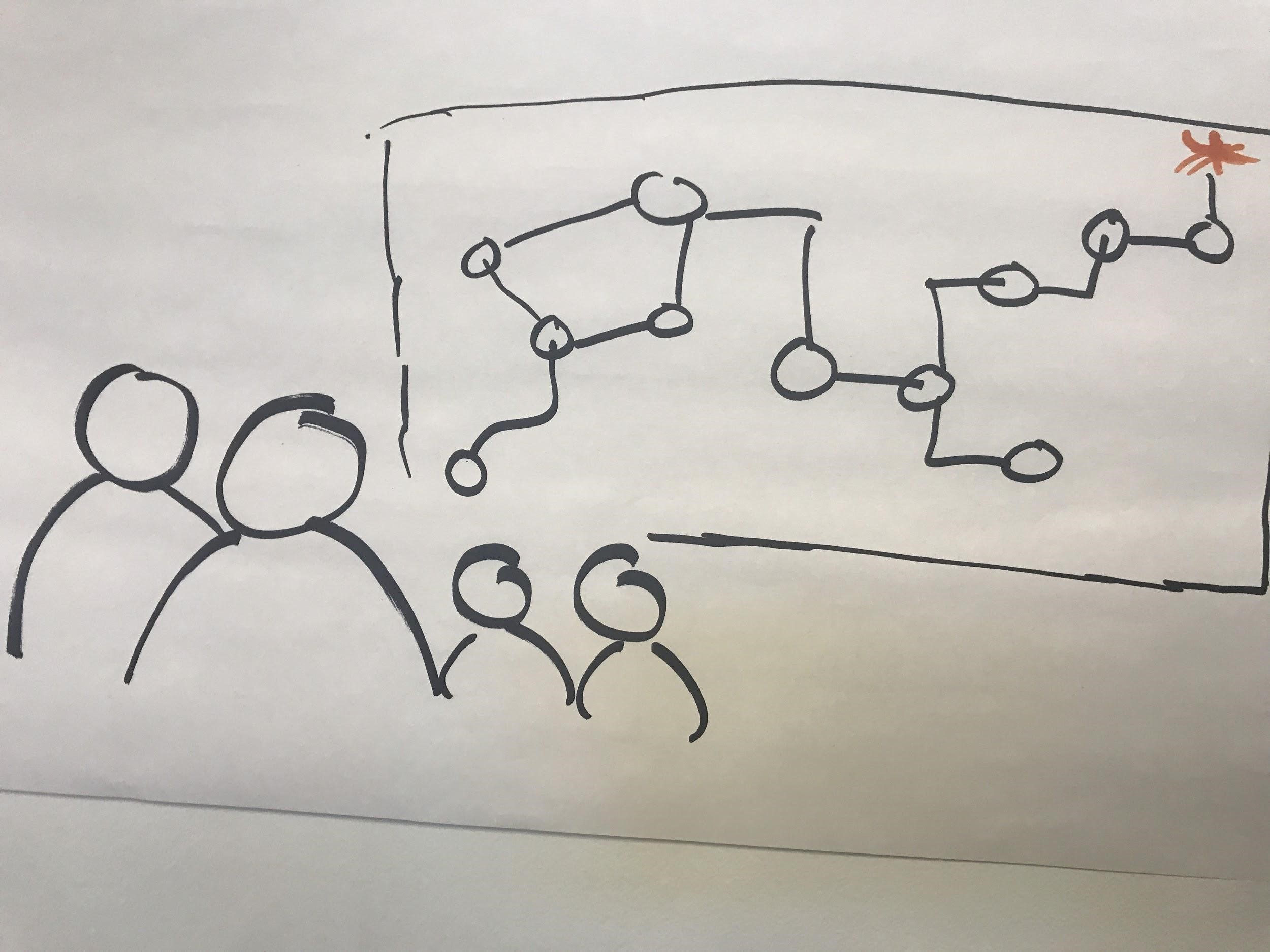Designing Partner-Centered Grantmaking Processes
Human-centered design is on the rise within the social sector. Governments, nonprofits, and social enterprises are increasingly generating products, systems, and processes that put the people primarily affected by a problem at the center of their design process. Called “design thinking,” this methodology enables the sector to tackle complex social problems and design innovative responses and solutions that better reflect the lived experience of a community.
The philanthropic sector can also apply design thinking to create grantmaking and capacity development experiences that more intentionally, authentically, and creatively meet the needs of nonprofit organizations. Starting from a place of empathy – the first step of design thinking – foundations can explore opportunities for more partner-centered grantmaking. As philanthropy continues to strengthen diversity, equity, and inclusion in the sector and shift power in grantmaking, design thinking is another tool in funders’ toolbox for social change.
At Global Fund for Children (GFC), we use design thinking as one way to practice our core value of partnership and to serve partners first. Design thinking exercises are a helpful guide to practice empathy and answer the essential question of, How might our grantee partners experience this?
Here are three ways you can experiment with design thinking to guide a creative process at your foundation to reimagine your grantee partners’ experience:
1. Empathize With Your Grantee Partners. Human-centered design’s powerful first step is empathy. According to Emi Kolawole, Editor-in-Residence at Stanford University d.School, “Empathizing with the people you’re designing for is the best route to truly grasping the context and complexities of their lives. But most importantly, it keeps the people you’re designing for squarely grounded in the center of your work.” Using an empathy map template, you can generate personas based on your grantees’ perspectives, reflecting on what they see, hear, think, and feel. Empathy mapping helps you better understand your grantees’ motivations and environment. Combined with grantee feedback or an interactive exercise with grantees, you can begin to design more partner-centered grantmaking.
GFC created empathy maps to explore the diverse needs of our partner organizations. For example, we put ourselves in the shoes of a nascent youth-led organization receiving its first-ever grant, a grantee in a rural area with poor access to the internet, and a civil society organization adapting to its country’s closing civic space. Empathy mapping helped us consider the breadth of partners’ realities – including through a youth lens – as well as partners’ nuanced experiences with GFC. When it is not possible to engage your stakeholders directly, empathy mapping can help ground your discussion and decision-making in grantee partners’ perspectives.
Empathy maps can be leveraged to better evaluate partners’ experiences during the next design-thinking phase: journey mapping.

A sample Empathy Map Canvas designed by XPLANE.
2. Map Your Grantee Partners' Journey. Through journey mapping, you can visualize your grantee partners’ engagement with your foundation.This exercise allows you to zoom in or out of the grantmaking life cycle. You can zoom into a specific step like completing an initial grant application or use journey mapping to envision a whole new grantmaking process.
With each of the identified steps of the journey, it is important to consider key moments of grantee partners’ experience with reflections from empathy mapping, grantee feedback or engagement, or other research:
- Goals: What are grantees' needs and expectations?
- Pain points: What are grantees' frustrations, questions, and doubts?
- Happy moments: What are grantees' moments of accomplishment and learning?
Global Fund for Children designed a journey map for our entire grantmaking process – from initial contact to becoming an alumni partner. Here is a glimpse at what this process yielded as our team looked at the stage of reporting:
- Partner goals: “Fulfill requirements so we can get the chance for more funding.” / “Showcase the work we are doing.”
- Partner pain points: “Do we only talk about what we did with GFC’s funding or all of our work?” / “What does GFC do with our responses?” / “This is really time-consuming because we are all volunteer-led!” / “We wish we had this reporting template sooner!”
- Partner happy moments: “The report is done!” / “We got a nice email back from our Program Officer with positive feedback.” / “It’s great to see all we’ve accomplished this year!”

You’ll notice that our team wrote our responses in the first person as we tried to put ourselves in our grantee partners’ shoes. Combined with feedback from our Grantee Perception Survey, GFC was able to create a more holistic picture of its grantee partner engagement. By reflecting on feedback given to program officers and imagining the very questions our partners might ask themselves but may not express to us, we re-centered the grantmaking process to focus on our partners’ experience.
3. Identify Opportunities for Learning and Strengthening. Journey mapping can help you observe questions and doubts in your process, as well as pinpoint where to seek more feedback from grantee partners to better understand challenges and possible solutions.
As you complete your journey map, you will identify challenges that you can now turn into opportunities for change. Some may be immediate tweaks that can make an important difference in how grantee partners understand your grantmaking. Others might enable you to ask bold “How Might We. . .” brainstorming questions to help generate creative ideas for a new grantmaking experience, such as: How might the grantmaking experience we create better embody our organizational values? You can then prototype and test these experiences as part of the design thinking iterative cycle. 
Overall, this exercise enabled us to identify several important opportunities to improve our grantmaking experience over the next year. We realized simple changes we could make on our website to improve access to information. We reflected on crosscutting themes important to our theory of change and how we can better integrate them throughout our grantmaking process. We created a working group to re-envision how we onboard organizations as GFC partners. We aspire to see the difference these and other changes make through our new annual Constituent Voice survey as we continue to listen to feedback to ensure local organizations have a powerful experience as GFC partners.
Designing the Future of Grantmaking with Empathy
As philanthropy continues to look for creative ways to strengthen its responsiveness to nonprofit sector needs, human-centered design may help your foundation explore difficult questions from a point of empathy: Are we collecting more information than we need? Should we offer more flexible funding? How can we strengthen trust and equity with our grantees and the community? Human-centered design lets you get to the heart of these questions through empathy and invites feedback, participation, and experimentation for continuous reflection and improvement.
While the design thinking approach offers many creative tools, its true value is as a mindset. Everyone can be a designer and embrace creativity, learning, and empathy. When you and your foundation next face a decision, no matter how small, take a step back and first ask yourselves: How might our grantee partners experience this?
For more information and learning, please see:
- IDEO Design Thinking Defined
- Introduction to Human-Centered Design online course by IDEO and +Acumen
- Equity Design Collaborative


